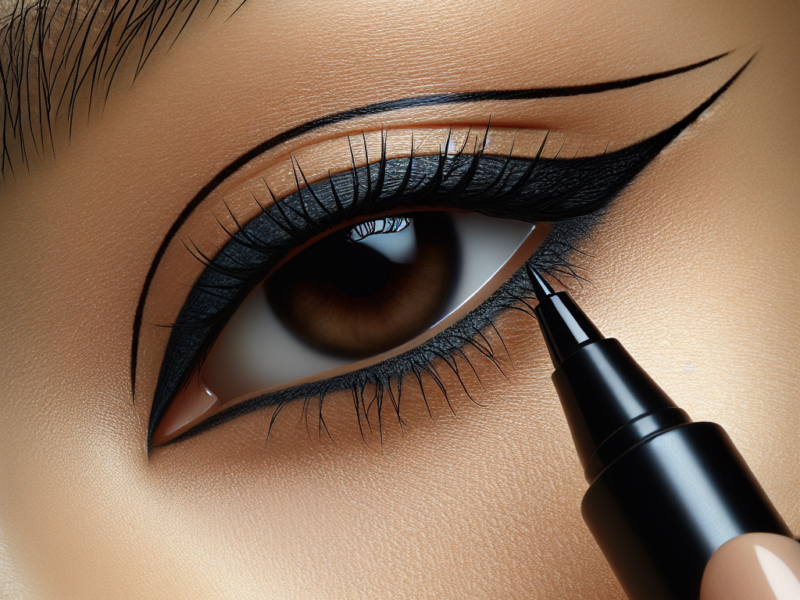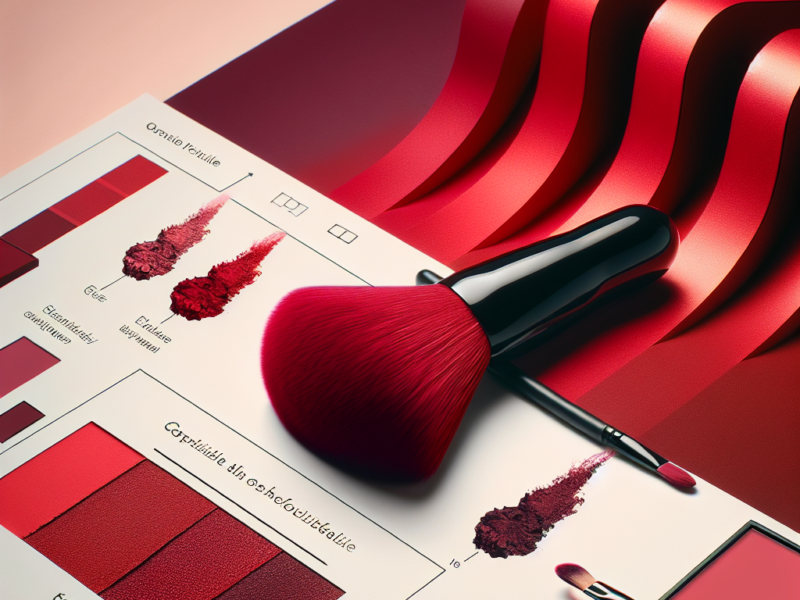Taking care of your makeup brushes is essential for maintaining flawless application and extending their lifespan. With regular use, makeup brushes accumulate oil, bacteria, and product residue that can affect the quality of your makeup and even lead to breakouts. In this article, you will discover simple yet effective techniques on how to properly clean and maintain your makeup brushes, ensuring a hygienic and impeccable makeup routine.

Check here to see how this cup of morning coffee will bright your whole day!!
Why is it important to clean and maintain your makeup brushes?
Prevents bacterial buildup
Cleaning and maintaining your makeup brushes is incredibly important for maintaining good hygiene and preventing bacterial buildup. Brushes come into contact with your skin, makeup products, and the environment, so they can easily accumulate bacteria and dirt over time. Without regular cleaning, these bacteria can transfer back onto your skin each time you use the brushes, leading to breakouts, infections, and skin irritation.
Maintains brush performance
Cleaning your makeup brushes regularly is essential for keeping them in optimal condition and maintaining their performance. Over time, makeup residue, oils, and dead skin cells can accumulate in the bristles and alter the texture and effectiveness of the brush. This can make it more challenging to achieve the desired makeup application, resulting in streaky or patchy finishes. By regularly cleaning your brushes, you can ensure that they continue to perform at their best and provide you with flawless application.
Prevents product contamination
Properly cleaning your makeup brushes is crucial for preventing product contamination. When you use dirty brushes, any product remnants from previous applications can mix with the new products you apply. This can not only alter the color and texture of your makeup but also lead to the spread of bacteria and germs. To maintain the integrity of your makeup products and avoid any adverse effects on your skin, regular brush cleaning is essential.
Essential tools for cleaning and maintaining makeup brushes
Cleaning solution
Having a suitable cleaning solution is essential for effectively cleaning and maintaining your makeup brushes. There are various options available on the market, including brush cleaners specifically designed for makeup brushes. Look for a gentle yet effective formula that can remove oil, dirt, and makeup residue without damaging the bristles or compromising the brush’s performance.
Microfiber cloths
Microfiber cloths are an excellent tool for cleaning and drying your makeup brushes. They are soft and gentle, making them ideal for removing excess water and product from the bristles. Microfiber cloths are also highly absorbent, allowing them to dry your brushes quickly without leaving behind any lint or fibers that could stick to the bristles.
Brush cleaning mat
A brush cleaning mat is a helpful tool for deep cleaning your makeup brushes. It features different textures and ridges that can effectively remove stubborn residue and thoroughly clean the bristles. Simply add some cleaning solution to the mat and gently swirl your brushes across the designated areas to loosen and remove any buildup. This tool makes the cleaning process more efficient and helps to prolong the life of your brushes.
Brush guards
Brush guards are a fantastic tool for maintaining the shape and structure of your makeup brushes during and after cleaning. They are protective mesh sleeves that slip over the bristles, providing support and preventing deformation. Brush guards are particularly useful for natural hair brushes, ensuring that the delicate bristles maintain their original shape and prevent splaying or fraying.
Frequency of cleaning makeup brushes
Daily cleaning for certain brushes
Some brushes, such as those used for applying liquid or cream foundation, should be cleaned after each use. These types of products can be more difficult to remove from the bristles than powders, and the accumulation of leftover product can lead to bacterial growth. By cleaning these brushes daily, you can ensure that they are always ready for use without any residual product or germs.
Weekly deep cleaning for all brushes
For brushes not used with liquid or cream products, a weekly deep cleaning is generally sufficient. This deep cleaning removes any accumulated makeup, oils, and impurities from the bristles, ensuring that your brushes are clean, fresh, and ready for use. By making it a part of your weekly routine, you can prevent product buildup and maintain optimal hygiene.
Step-by-step guide to cleaning makeup brushes
Gather your tools
Before you begin cleaning your makeup brushes, gather all the necessary tools. This includes your chosen cleaning solution, a microfiber cloth, a brush cleaning mat (if desired), and brush guards (if applicable). Having everything prepared and within reach will make the process more efficient and seamless.
Wet the bristles
Start by wetting the bristles of your makeup brushes with lukewarm water. Avoid using hot water as it can potentially damage the bristles and affect their performance. Hold the brush with the bristles pointing downward to prevent water from seeping into the handle or ferrule, as this can loosen the bristles and compromise the brush’s durability.
Apply cleanser
Apply a small amount of your chosen cleaning solution to the bristles of each brush. You can either dispense the cleanser directly onto the bristles or into a separate container to dip the brush into. Gently work the cleanser into the bristles using your fingers or a brush cleaning mat. Ensure that you are thoroughly covering each bristle to remove all traces of makeup, dirt, and oils.
Gently massage and rinse
After applying the cleanser, gently massage the bristles using circular motions to loosen any remaining residue. Be mindful of the bristles’ delicate nature, especially for natural hair brushes, and avoid applying excessive pressure that could cause damage. Once thoroughly massaged, rinse the bristles under lukewarm water until the water runs clear and all the cleanser is rinsed away.
Shape the bristles
Once you’ve rinsed the bristles, gently squeeze out any excess water using your fingers or a microfiber cloth. While the bristles are still damp, reshape them using your fingers to ensure they retain their original shape. This step is particularly important for natural hair brushes, as reshaping them while wet helps prevent splaying or fraying as they dry.
Dry the brushes
Finally, lay your makeup brushes flat on a clean microfiber cloth or hang them upside down with the bristles facing downward to allow them to dry thoroughly. Avoid placing wet brushes upright or standing them on their bristles, as this can lead to water pooling in the ferrule, causing damage and rotting the brush handle. Allow the brushes to dry completely before storing or using them again.

Different cleaning methods for different brush types
Synthetic brushes
Synthetic brushes, typically made of nylon or taklon, can be cleaned using the same steps outlined above. These brushes are generally more durable and less prone to damage from moisture, making them suitable for more vigorous cleaning methods. However, it is still essential to be gentle with the bristles and avoid scrubbing too harshly to maintain their longevity.
Natural hair brushes
Natural hair brushes, such as those made from goat, squirrel, or pony hair, require extra care during cleaning to prevent damage. To clean natural hair brushes, follow the same steps mentioned earlier, but be more cautious with the bristles’ delicate nature. Avoid excessive pressure or harsh scrubbing, which can cause the bristles to fray, splay, or lose their shape. Additionally, be sure to reshape the bristles while wet to help maintain their original form.
Blender sponges
Cleaning blender sponges, such as the popular Beautyblender, requires a slightly different approach. Begin by wetting the sponge and applying a small amount of mild soap directly onto it. Gently squeeze and massage the sponge to create a lather, ensuring that the soap reaches all areas. Rinse the sponge under running water until the water runs clear, gently squeezing out any excess water. Finally, allow the sponge to air dry in a well-ventilated area.
Preventing damage while cleaning makeup brushes
Avoid soaking the ferrule
When cleaning your makeup brushes, it’s essential to avoid soaking the ferrule, which is the metal or plastic casing that attaches the bristles to the handle. Soaking the ferrule can loosen the adhesive that holds the bristles in place, leading to shedding and bristle loss. Instead, only wet the bristles and keep the brush in an upright or downward position to prevent water from seeping into the ferrule.
Be gentle with brush bristles
Being gentle with brush bristles is crucial to prevent damage while cleaning. Use light pressure and gentle circular motions when massaging the cleanser into the bristles and avoid aggressively scrubbing or twisting them. Additionally, be mindful of the bristles’ delicate nature, especially with natural hair brushes, and handle them with care throughout the cleaning process.
Keep brush handles dry
While cleaning your brushes, it’s essential to keep the brush handles dry to prevent water damage. Excessive moisture can lead to wood swelling, paint peeling, or rotting of the handle. Avoid submerging the brush handle in water and be cautious not to let water drip down from the bristles onto the handle. If any water does come into contact with the handle, quickly wipe it dry with a microfiber cloth.

Storing and organizing makeup brushes
Proper drying and shaping
After cleaning your makeup brushes, it’s crucial to allow them to dry properly to maintain their shape and prevent mold or mildew growth. Lay the brushes flat on a clean microfiber cloth or hang them upside down with the bristles facing downward to ensure proper airflow and drainage. Avoid storing or using the brushes while they are still damp to prevent damage or bacterial growth.
Using brush holders or cups
Using brush holders or cups is an excellent way to store and organize your makeup brushes. These holders not only keep your brushes upright and accessible but also help to preserve their shape and prevent them from getting damaged or contaminated. Look for brush holders with individual compartments to separate different brush types and sizes for a more organized and efficient setup.
Travel-friendly storage options
When traveling with your makeup brushes, it’s essential to have suitable storage options to protect them from damage and maintain their cleanliness. Consider using brush rolls or cases specifically designed for traveling to securely store your brushes. These travel-friendly options usually feature individual slots or compartments for each brush, ensuring they stay in place and remain protected during transit.
Signs it’s time to replace makeup brushes
Frayed or splayed bristles
One clear sign that it’s time to replace your makeup brushes is if the bristles become frayed or splayed. Over time, the bristles can become worn out, damaged, or lose their original shape due to regular use and cleaning. Frayed or splayed bristles can affect the application and performance of the brush, resulting in uneven or streaky makeup application. If you notice significant damage to the bristles, it’s time to invest in new brushes.
Persistent shedding
While some shedding is normal for new brushes, persistent shedding even after thorough cleaning is a red flag that your brushes may need replacement. If you consistently find bristles on your face or in your makeup products, it’s a sign that the brush is losing its integrity and may not provide you with the desired application. In such cases, it’s best to retire the old brushes and invest in new ones.
Unpleasant odor
If you notice a persistent unpleasant odor coming from your makeup brushes, it’s a clear indication that they are no longer clean and may be harboring bacteria and germs. Even with regular cleaning, brushes can accumulate bacteria over time, causing an unpleasant smell. If the odor persists despite thorough cleaning, it’s time to replace your brushes to maintain hygiene and prevent potential skin issues.
Tips for maintaining makeup brushes’ longevity
Avoid cross-contamination
To maintain the longevity of your makeup brushes, it’s crucial to avoid cross-contamination. Cross-contamination occurs when you use the same brush for multiple products without cleaning it in between. This can transfer different colors and textures of makeup onto the brush, leading to muddled colors and compromised performance. To prevent cross-contamination, clean your brushes regularly and consider having separate brushes for different types of products.
Be mindful of brush usage
Being mindful of brush usage is essential for prolonging their lifespan. For example, avoid using your high-quality, natural hair brushes with more harsh and pigmented products like liquid liners or glitters, as these can cause faster wear and tear. Instead, opt for synthetic brushes or disposable options for such products. By using the right brush for each product and being mindful of their limitations, you can extend their durability and performance.
Regularly sanitize
In addition to regular cleaning, it’s important to regularly sanitize your makeup brushes to kill any remaining bacteria. Sanitizing is particularly crucial for brushes used on acne-prone areas or for those with sensitive skin. You can use alcohol-based sprays or wipes specifically designed for makeup brushes to sanitize them between deep cleanings. This extra step helps maintain hygiene and keeps your brushes in good condition.
Do’s and don’ts of makeup brush cleaning
Do clean brushes after using liquid or cream products
It is essential to clean your makeup brushes immediately after using liquid or cream products. These types of products tend to cling to the bristles, making them more challenging to remove later. By cleaning the brushes promptly, you can prevent the buildup of dried product and bacteria, ensuring that your brushes are always clean and ready for use.
Don’t use hot water on natural hair brushes
Avoid using hot water when cleaning natural hair brushes, as it can damage the delicate bristles. Hot water can cause the bristles to lose their shape or become brittle, reducing the brush’s overall performance and lifespan. Stick to lukewarm water when cleaning natural hair brushes to ensure their longevity and optimal performance.
Do clean brushes with mild soap
Using a mild soap or specially formulated brush cleanser is highly recommended for cleaning your makeup brushes. Harsh soaps or detergents can strip the bristles of their natural oils, leading to dryness and brittleness. Opt for gentle cleansers that effectively remove makeup residue and bacteria without compromising the softness and integrity of the bristles.
By following these guidelines, you can ensure that your makeup brushes are clean, hygienic, and in excellent condition. Regular cleaning and maintenance not only enhance their performance but also protect your skin from potential irritation and breakouts. With proper care, your makeup brushes can continue to provide you with flawless application for years to come.




